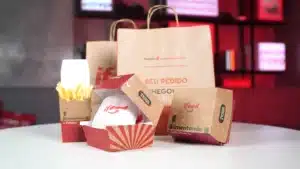Selective collection is also one of the actions that help combat to the global warming. This is because it is essential for the waste recycling that we generate. And this reuse of what we throw in the trash reduces the impact on the environment.
According to studies carried out by Always (Business Commitment to Recycling), when not recycled, urban solid waste is responsible for the release of 53.2 million tons of CO2 per year in the atmosphere of Brazil.
Another alarming fact is that the pollution caused annually by landfills in the country is equivalent to that generated by 3 million gasoline-powered cars, according to studies of the National Union of Urban Cleaning Companies (Selurb).
How important is selective collection to combat global warming?
In addition to reducing atmospheric pollution, selective collection contributes to reducing the waste of natural resources and feeds the circular economy.
When a material is recycled, it saves steps in the process of producing new goods. Selective collection is the first step in the circular economy. Thus, in this cycle, what went to waste returns as raw material thanks to recycling.
As most production processes emit pollutants such as carbon dioxide, methane and nitrous oxide, reducing production processes reduces the emission of these gases. And so it helps to combat the greenhouse effect and global warming.
Discover the colors of selective collection
A 2001 resolution from Conama (National Environmental Council) defined the colors of bins for selective collection, according to the type of each material. Are they:
- Yellow: metal in general
- Blue: paper, cardboard
- White: outpatient and healthcare waste
- Gray: general non-recyclable or mixed waste, or contaminated waste that cannot be separated
- Orange: hazardous waste
- Brown: organic waste
- Black: wood
- Purple: radioactive waste
- Green: glass
- Red: plastic
How to carry out selective collection?
In addition to installing the bins, you will need some cares to carry out selective collection properly.
Therefore, each item must be cleaned to avoid the action of insects and microorganisms and the deterioration of the material to be recycled.
Paper should not be crumpled, and dirty parts of cardboard packaging must be discarded as non-recyclable waste. Finally, the windows must be dry.
How does iFood contribute to selective collection and waste management?
Since August 2022, iFood has supported and sponsored the project Re-cycle, which wants to expand selective collection in Fortaleza without polluting the environment. To do this, the collectors travel on electric tricycles, a non-polluting mode.
Re-ciclo collects recyclable waste and forwards it to partner recycling associations. As of September 2022, Re-ciclo had already recycled 30 tonnes of waste and generated R$ 48,182 in income for waste picker associations.
To encourage waste management projects like this in other cities, iFood launched in September 2022 the Guide to Model City in Waste Management in partnership with Manuia.Fortaleza was the first to adopt the solid waste management model, which was prepared based on the National Solid Waste Policy and Plan (PNRS).
Another iFood initiative that seeks to strengthen selective collection and the recycling chain is the implementation of 80 PEVs (Voluntary Delivery Point) in Rio de Janeiro, São Paulo and Bahia.
Even the delivery bags are recycled. In the project I've Been Bag, in partnership with Greening and Retalhar, iFood backpacks that are no longer in usable condition are collected.
Then, they saw new products, such as bags and fanny packs, or even fuel for industry. Between 2020 and 2021, 124 tons of bags have already been recovered instead of going to landfill.
Finally, iFood offers the Recycle Bot, an environmental education tool that answers questions about sustainability via WhatsApp.


